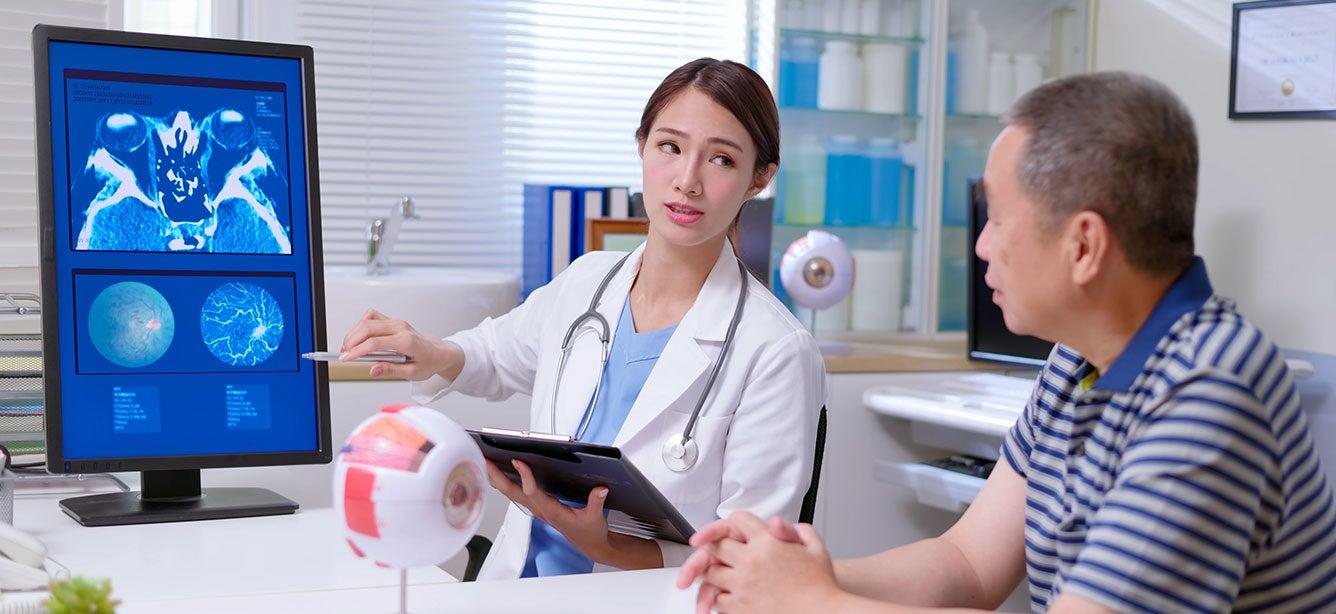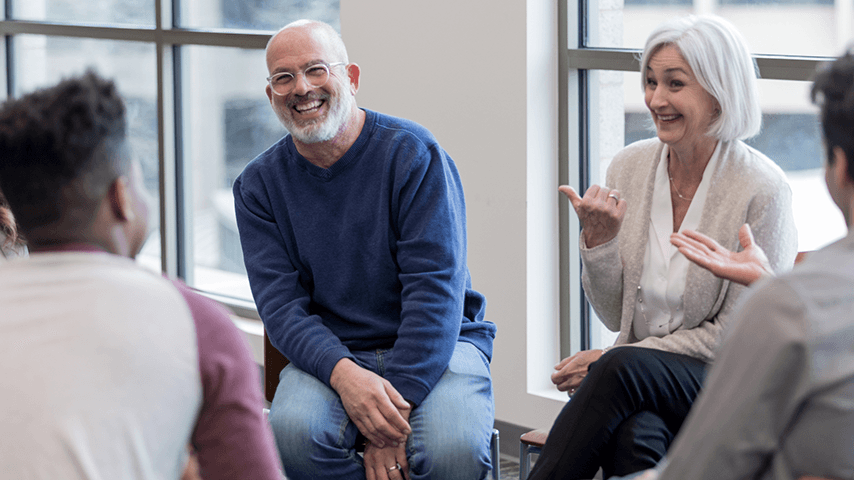
Related Topics
While it’s normal to experience some vision changes as we age, we shouldn’t assume that all gradual or sudden vision changes are simply part of growing older.
Of course, natural changes occur in our eyes over time. And with age, we are also at increased risk for developing age-related eye diseases, including cataracts, glaucoma, diabetic retinopathy, macular degeneration, and more.
Everyone should maintain ongoing eye care, being proactive about their eye health versus being reactive.
Regular eye exams help your eye doctor identify which vision changes are expected with aging versus conditions requiring continued monitoring or targeted treatment. If anyone experiences sudden vision loss, any sudden changes in distance vision, arm’s length vision, or near vision—changes in central or peripheral vision—or experiences any pain in the eyes—they should always have that checked by an eye doctor.
Early diagnosis of any age-related eye diseases is crucial. For example, if you have diabetes, you should have a dilated eye examination every year. Depending on the condition, you might need ongoing eye care on a more routine basis. It’s also important to let your eye doctor know about eye conditions experienced by your family members. Again, being proactive with your doctor about your eye health.
What are some common age-related eye diseases?
Cataracts
Cataracts are related to the eye's normal aging process and result from calcification and clouding of the eye's lens. Cataracts can cause various symptoms, including blurry vision, increased glare, and more. Your eye doctor can determine the level of cataracts and, through regular eye exams, evaluate the progression and propose any intervention—such as filters to reduce glare—or surgical intervention, where necessary.
Glaucoma
Glaucoma is a group of eye diseases that can damage the optic nerve that connects the eye to the brain. Increased intraocular eye pressure can damage the optic nerve and, if left untreated, can lead to blindness and permanent vision loss. Glaucoma often develops slowly and painlessly, and its early stages may have no noticeable symptoms. Individuals might, as the Glaucoma progresses, experience a gradual loss of peripheral (side) vision, Tunnel vision (where the field of vision narrows), blurred vision, halos around lights (often more pronounced in lower light situations), or difficulty adjusting to lighting changes, and eye pain.
Refraction changes, floaters, dry eyes, and other age-related eye issues
As the eye ages, you may experience refraction changes, where the light coming in hits a different part of the retina. Some of these refraction changes can be corrected through prescription glasses, which can shift the light to improve sight. However, some eye changes can be more serious, so proactivity is key when experiencing any perceptible vision change.
Other age-related issues that an eye doctor should evaluate include an increased number of floaters in the eye. Floaters are dark specs that we can sometimes see. While some floaters can be normal, any significant change in floaters, flashes of light, or areas of darkness could signal something more serious impacting the retina or photosensors and should be immediately checked by your eye doctor.
Dry eyes can be another age-related complication ranging from minor to more complex and chronic. An eye doctor can evaluate your condition and recommend the best treatment to increase comfort and reduce the long-term risk of eye injury.
Macular degeneration
Macular degeneration is another age-related eye disease that can blur central vision - causing blurry or wavy areas in central vision. Changes in central vision can make it increasingly difficult to see things right in front of you, causing increased reliance on peripheral (side) vision. Often, there are no early signs of Macular Degeneration, which is another reason why regular eye exams are so important.
Diabetic retinopathy
Diabetic retinopathy results from diabetes, and diagnosis and proper treatment of the underlying medical condition is crucial. If you have been diagnosed with diabetes, it’s essential to be proactive and see an eye doctor, too, since diabetes can significantly impact eye health and cause permanent vision loss. For some adults, diabetes is initially detected through an eye exam.
Hope and acceptance with vision loss
Despite age, hope and acceptance are crucial to living a full life with blindness or low vision. Eye doctors, including low-vision specialists, can help patients manage their eye treatment effectively and provide a vital referral for comprehensive, multi-disciplinary vision rehabilitation services. This referral is clearly in the patient's best interests because it addresses the eyes, the head, and the heart. From a psychosocial side, a person with vision loss can access support and begin to walk that bridge of acceptance. Rather than building anger, depression, and frustration, they can avoid defining themselves by their vision loss through vision rehabilitation, counseling, and other support.
Living a safe, confident, and independent life with vision loss
Advocacy from a supportive family, caregivers, and friends, self-advocacy, and interactions with older adults facing similar challenges - including support groups - can help ease the transition one experiences with blindness and low vision.
How can vision rehabilitation help with vision loss?
Vision rehabilitation can help adults with blindness and low vision remain active and independent. For example:
- Independent living skills training builds skills that an individual needs to perform daily living activities—including eating, cleaning, and personal hygiene—to maximize confidence, safety, and independence
- Access technology training helps to connect with the world, including a broad range of technology, screen readers, and apps created for people with blindness and low vision
- Orientation and mobility training helps build confidence in moving safely at home and throughout the community
- Vocation rehabilitation helps those with vision loss to remain in a current position or transition to a new one
- Support groups and other types of counseling and support can positively impact mental health and wellness
Vision rehabilitation services begin with a comprehensive assessment that identifies the scope of vision loss, an individual’s life goals, and areas of difficulty with daily living. A personalized plan is developed to provide the optimum training and support to live life fully.
If you or someone you care for faces blindness or low vision, support is just a call or click away. Visit Time to Be Bold to locate your area’s vision rehabilitation services and other crucial resources. Speak with someone at the APH hotline for support, explore practical coping strategies for everyday tasks, engage in remote discussion groups, and access free online resources at the APH Connect Center and VisionAware. And read more about vision loss and mental health.



